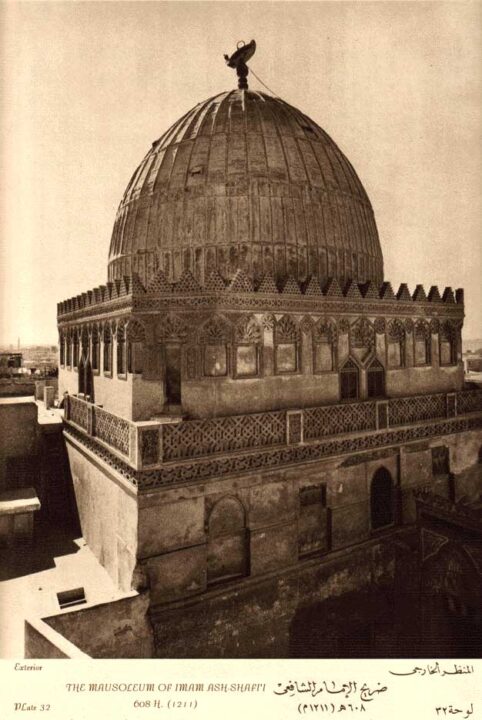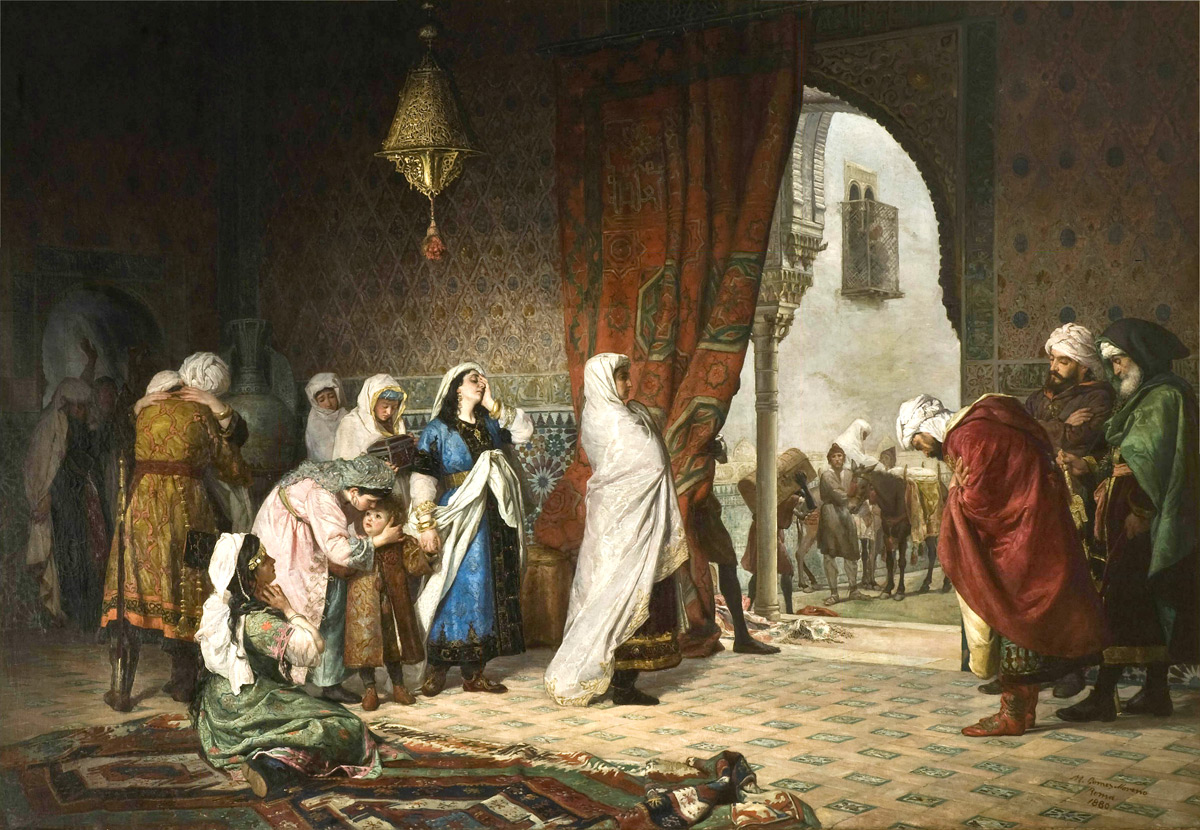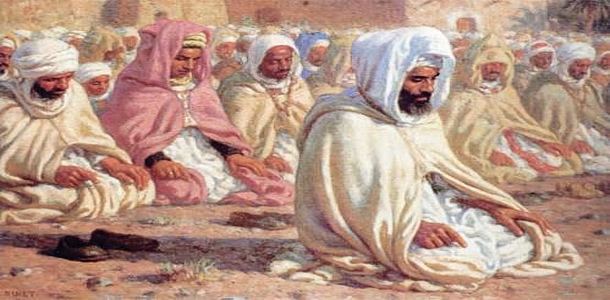THE SECOND TRANSFORMATION
FIRST HALF VIII CENTURY TO BEGINNING XII CENTURY
General Introduction.
After a belligerent and expansive beginning, the Islam had established inside long and distant borders. That included extensive territories, placed in three known continents, in his parts more out-standing active and fundamental.
It was already time to realize a reflection and an internal doctrinal debate. That was interpreting and adapting towards the future, the whole Islamic revelation. That then was contained in the Koran, the hadises of the Prophet (his verifiable facts and sayings) and the behavior of the salaf or predecessors of the Islam, the primitive and pious Muslims. It is the work of ideological organization of the Islam and the believers’ community. And it shapes a second Transformation in the Islam.
There arise soon the Islamic schools, the cores of ideological work and his social projection. That vertebran around groups of believers and experts, who were living in the principal environments of dar al-Islam. These schools commenced and elaborated in a beginning the criteria and ideas that his neighbouring thinkers were mantaining. In an epoch of difficult communications. They were representing and assembling the expressions and the experiences of the Muslims of diverse origins and races. To that were added the contributions of Moslem eminent travelers, who traveled the ideological centers of the Islam from al-Andalus up to Baghdad.
All this was rethought, consulted, debated and decided by the members of the school, his collaborators and some out-standing thinkers of the country or the region. This way, they were creating different teaching corps by his different origins, to illuminate and direct the ideology and the actions of the Umma. And to project, with major or minor intention and result, towards the future, always changeablly and unknown, an ideological instrument that guarantees and allows an adaptative and rigorous evolution of the Islam.

In this mental and spiritual emergence, happened only one century after the death of Mohammed, concentrating all their human energies, the Muslims also devoted themselves to translate to the Arab all the knowledge of the epoch (VIIth and VIIIth century). This way, they founded libraries and submitted to the study of the universal knowledge and to apprehend it (from “aprehendere”, to grasp). Raising this way his humanities and sciences to a position of total preponderance, which they would preserve for 350 years, up to the 12th century.
A fundamental reason of this cultural bloom of the Islam was his multinational, global character. Already we saw that, once established the incorporations of countries and regions to dar al-Islam, existed initially a broad tolerance over the lives of the new subjects. This way, the cultural Islamic community took up, incorporated and synthesized in his specific task, the contributions of all kinds of cultures and races. And this also derived in the respect and the material support that the Muslims offered to this humanist culture that they created.

In addition, from the emergence of the 3 principal ideological sunnis schools, gathered strength the principle of the personal reflection effort, the ichtihad, in the Islam. The ichtihad allowed the development of the Arabic civilization, so much as for the civil aspects (sciences, trade, literature, art), as for the enrichment of his ideology (it is the base for lawyers like al-Chafii). The ichtihad was a source of brilliancy, creativity, enrichment, progress and peace in the way of the personal and collective effort towards Allah (this is the authentic core and the reason of the Islam). When already the Umma had spread and enormously multiplied all over the known world.
Certainly, this really religious, mystical effort, is called the Major Yihad (in Allah’s way). Unlike to the purely military one, which is only a minor Yihad, to follow this way… All this exuberant ideological development constituted the second Transformation of the Islam.
Origin, need and transmission of the Islamic Tradition.
The histories orally transmitted of «the customs and sayings» (the Sunna) of Mohammed, transformed soon in writings. That were, in turn, objects of great summaries. Each story or written comment is called the hadith or hadis. The term also is used to refer to the generality of them. The length of the hadises is very variable, according to the topic of the writing. More interesting and definer for us is his intelligent internal structure. This characterizes them and gives faith of their verisimilitude. In each hadis is usually first exposed the «transmission chain» up to its writing or the checking of her, from his oral origin, with the figure of the «transmitter«. Nowadays, we would call this the historical traceability. They are of first importance as «transmitters» of the hadises, Aixa or A’, isa, the second and preferred wife the Prophet, and Ali, his cousin and son-in-law. Then, there comes the content of the story or the comment, called the «matn«.

A’,ISA
The Koran in the chapter 4, verse 59, guarantees and grants a special power of decision and of explanation to the Prophet or Envoy of God and to the sovereigns, successors or Moslem caliphs, who are those who hold the authority in the Umma. This would explain and justify the need of a qualified interpretation, foreseen by Allah, for the practical application of the Koran along the geography and the history of the peoples. With Mohammed acting as interpreter, as exceptional and privileged «intermediary» of Allah.

THE SEAL OF ALI, THE FOURTH CALIPH OF THE ISLAM
There exist hundreds of thousands of hadises that have come up to us. And between them numerous contradictions appear. In addition, the total text is excessive for have commented or saying and lived or realized by Mohammed. Even using for it all his life. From almost the beginning, the own exegetas and apologists of the Islam saw this. The hadises were in the risk of turning into a chain of myths, tribal embellished stories and realities more or less preserved from a vaporous and insecure Tradition of the Prophet. And soon was established a critique system of the «isinad» or transmission. To guarantee in strict sense the quality of the content or «matn» of the hadises, as written Tradition.
The sunni ideological schools.
Abu Hanafi, an Iranian died in Kufa, city at the south of Baghdad, in 767, established the hanafi school. This school is outlined in the rigor in the selection of Mohammed’s hadises. And she accepts the employment of the istihsan or personal approval, as criterion for the social conduct. It is extended in Egypt, Turkey, Jordan, Syria, Afghanistan, Pakistan, India, Bangla Desh and the turkishmens territories of Central Asia (ex-soviet republics). The hanafism was the official Moslem doctrine of the Ottoman Empire.
 IMAM ABU HANAFI
IMAM ABU HANAFI
The maliki school was founded by Malik ben Anas, who died in Medina in 795. The doctrine turned into the rite of the Muslims of the West and North of Africa. She regarded that was following the Moslem practice of Medina. And that was the most authentic, for being that the so called city of the Prophet and of the first four caliphs, the Rashidun. In his version, Malik applied the criterion of the usefulness, when sure texts did not exist, to defend the reason, the religion, the persons, the families and the goods.

IMAM MALIK BEN ANAS
The most opened and flexible school, the chafii, founded by the Palestinian al-Chafii, died in Cairo on 820 at the age of 53 years, opened an encouraging door for the pacific evolution of the Islam. This current accepts the «consensus of the sages of the Umma» and the analogical reasoning or qiijas, as correct inspired routes for the adjustment of the Islam to all the times and places. Departing from his original «rural, illiterate, poor and medieval origin and surrounded of hostiles and barbarism«.

It worth indicating that, having jointly and in the essence of his thoughts the Koran and the tradition of the Prophet, the three ideological schools had a strong common ideology. This way, it was always admissible, especially in the origins, that the Muslims were changing its school of thought.
(TO BE CONTINUED)